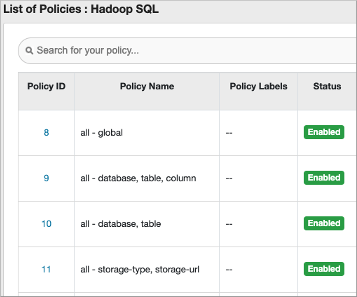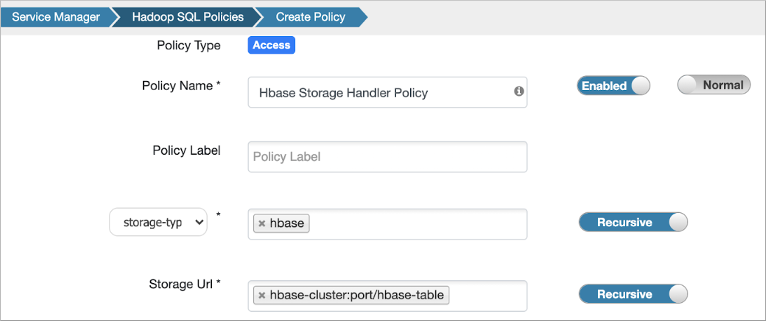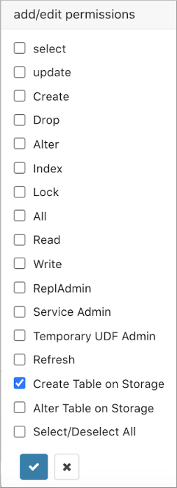Creating secure external tables
A step-by-step procedure shows you how to create a secure external table using SERDEPROPERTIES or TBLPROPERTIES and Ranger policies.
Create table foo_ext(i int) stored by 'org.apache.hadoop.hive.hbase.HBaseStorageHandler'
with serdeproperties ("hbase.columns.mapping"="cf:string", "hbase.table.name"="hbase_table_0”);
In this case, the URI sent for ranger Authentication is
hbase://hostclustername:2181/hbase_table_0/cf. In this procedure,
you create a Hadoop SQL policy in Ranger that provides the following authorizations:- Authorizes the end user against the location of the external table.
For example, in Ranger create an HDFS policy to give read, write, and execute permissions to
hdfs://user/warehouse/tablespace/external/hive/foo. - Authorizes the end user against the URI used in the table creation statement.
For example, in Ranger set a SQL policy to give create/alter/drop privileges on hbase://hostname:portnumber/hbase_table_0.
- Authorizes the user hive to access the HBase table.
For example, in Ranger set an HBase policy to have full access to hbase://hostname/hbase_table_0.
By default, the capability to create StorageHandler-based tables is turned off. Required Ranger features changes might not be available in your environment.
- Check that you have required Ranger features as described in the next topic.
- Enable authorization of StorageHandler based tables as described in the subsequent topic.





